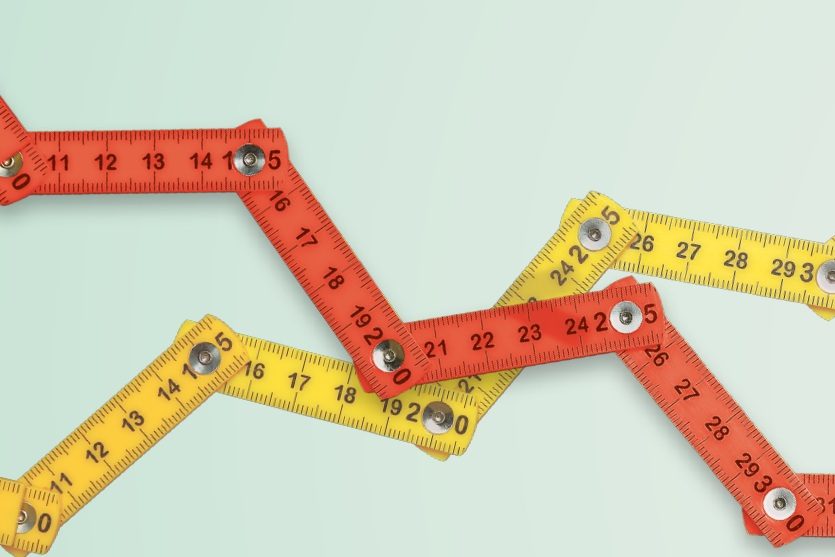Measuring inflation is no easy task
Dr Dennis Wesselbaum outlines how inflation is measured, its value, its flaws and ideas for better accuracy.

German architect Ludwig Mies van der Rohe is believed to be the originator of the saying “God is in the details”. The saying means that while something appears to be simple, the underlying details can be complicated. The same applies to measuring inflation.
In general terms, inflation is a positive change in prices between two periods. I guess this is intuitive. However, how we arrive at one number, the inflation rate, is more complicated than most will appreciate and involves a high degree of mathematical theory. At its core, the inflation rate reflects the change in the amount of money needed to maintain a certain standard of living.
Computing the overall change in prices in an economy is a difficult task. Not only do consumers buy thousands of different goods and services, the characteristics of these goods and services are changing with consumer preferences varying, quality changes, new goods being introduced and some goods being taken off the market. Therefore, it is a challenge to combine all these prices into an index that gives one number that we can track over time.
Getting the info
To do so, we rely on a price index. A price index is a measure that summarises the change in prices of many goods and services from one period to another. In fact, it is better to think about a representative basket of goods and services. This implies that the change in prices of the goods and services that I consume will be different to the price change you will experience by buying your basket of goods and services. However, if we aggregate across all consumers in an economy, we arrive at an index that represents the representative (or average) consumer. These prices are obtained through postal surveys, store visits (>2,800 in 12 cities), and the internet by StatsNZ.
Furthermore, the price index is usually a weighted average of a given basket of goods and services; i.e. not all goods and services count equally. For example, in the current price index for New Zealand, housing and household utilities is the largest group with a weight of 28% and food is the second largest group with a weight of about 19%. This also implies that some prices in the economy can fall while the overall inflation rate is positive.
Laspeyres or Paasche!
To be precise, when we talk about inflation, we talk about the change in prices based upon the CPI, the Consumer Price Index. It measures the change in prices of a fixed basket of goods and services (649 for NZ, to be precise).
It applies the so-called Laspeyres price index formula, which relates the costs of buying a fixed basket of goods and services in a base period with the cost of purchasing the same basket in the next period. An alternative is the so-called Paasche index, which computes the costs of buying a fixed basket today and compares it with the costs of purchasing this basket in a previous period. Of course, hybrid indices exist, which combine these two (and other definitions).
The Laspeyres index is subject to several biases and generally overstates price changes (while the Paasche index understates them). These include the substitution bias, where the index does not take into account that consumer preferences (and therefore demand) changes. Also, the quality bias, where the index fails to incorporate quality changes and the new good bias, new goods are typically not included until they achieve some market position. It assumes one price for a good, whereas in reality, prices are likely to vary across outlets and even locations.
Timing
To limit these biases, the basket is updated regularly. In New Zealand this happens every three years. Updating the basket in every period is called “chaining” (the New Zealand CPI is therefore chain-linked every three years). The US central bank focuses on the so-called “Personal Consumption Expenditure” price index (PCE), which is an example of a chained index. While the CPI and the PCE show a similar trend over time, the CPI tends to increase more than the PCE.
This relates directly to the frequency at which the price index and, hence inflation, is computed. In New Zealand, inflation is measured quarterly, but monthly in other countries, for example the US. Generally speaking, having more information should allow one to make better decisions. However, I think this ignores a political economy story and behavioural factors (e.g. “action bias”, where people prefer to do something over doing nothing and “optimism bias”, where we overestimate the success chance). If more frequent inflation data were to be available, this could create an incentive for a central bank to micro-manage and overcorrect the economy. I think this risk is particularly strong for the case of the RBNZ with a weak leadership without credible expertise in monetary policy.
I would like to close with some final remarks. CPI Inflation only applies to households. There are also various producer price indices that measure the changes in prices (input or output) for producers. Furthermore, it is very difficult to put prices on goods and services that are not produced or sold on markets. For example, household production (e.g. care of children, sick, or older adults, or growing vegetables) is difficult to measure accurately.
Electronic scanner data
A solution for biases in the index could be to use electronic scanner data, which includes detailed information that can be used to limit these biases. Efforts are already underway, for example, in Australia, the Netherlands, Norway, Sweden and Switzerland. NZ has introduced scanner data for consumer electronics and plans to extend the usage of scanner data in the future.
Overall, measuring inflation is a difficult task in theory and in practice. This requires a careful interpretation considering the strength and weakness of a given measure of inflation. Furthermore, it also requires considering not just one measure of inflation but a range of measures that, hopefully, paint a picture of the underlying inflationary pressures.




